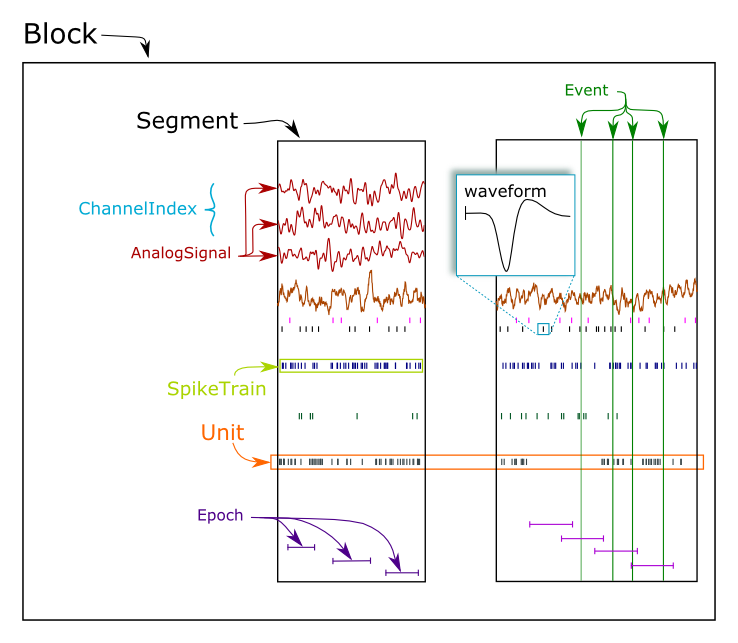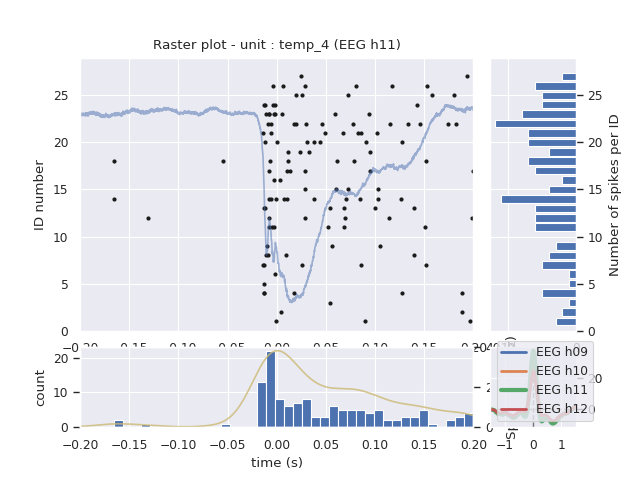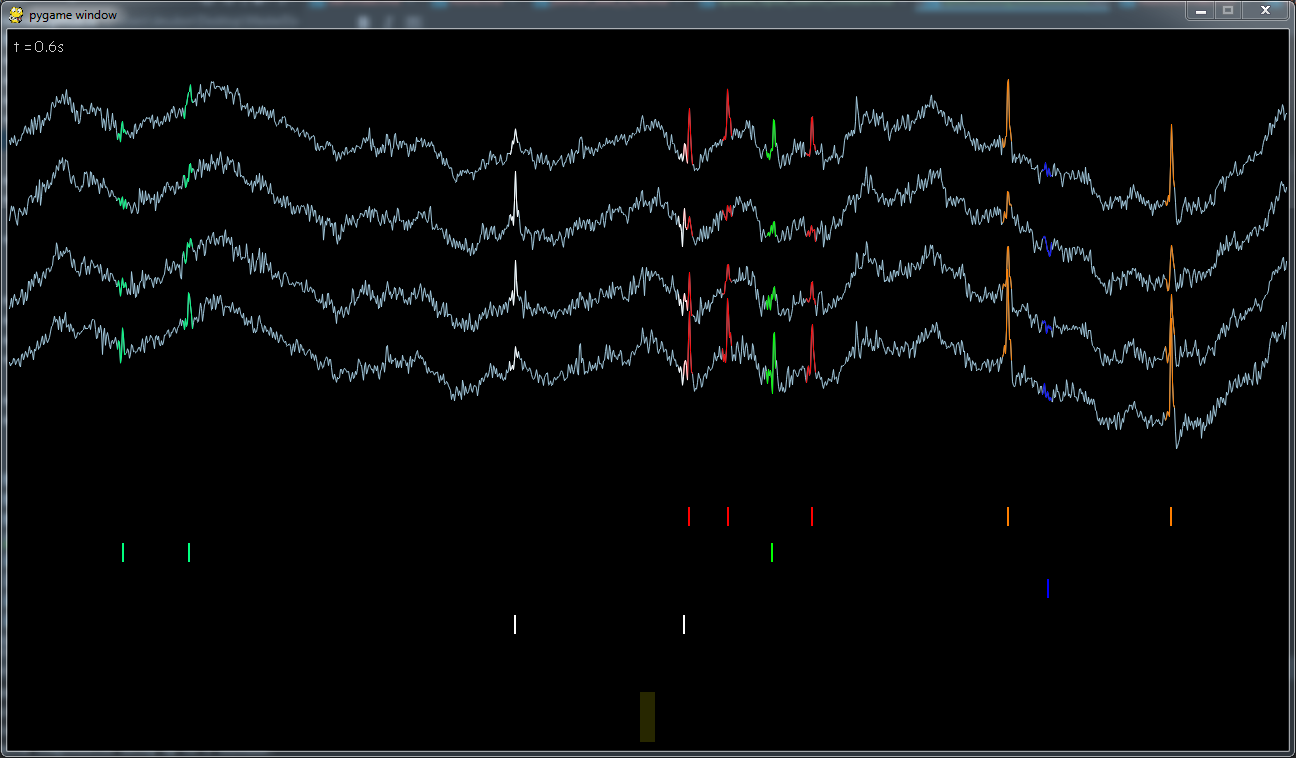Neurons
lun. 04 octobre 2010 by Martin DeudonIntro
Thanks to the new DIXI micro-macro electrode, single-unit activity can be recorded in epileptic patients during sEEG exploration.

Analyses
Spike-Sorting
Many spike-sorting tools exist (WaveClus, SpykingCircus, tridesclous, Spike2, ...). See here for more. We have chosen SpykingCircus, it has the advantages of handling tetrode configuration, to be designed in Python, and has been tested on several datasets, reaching very good results.
Neo
Neo is a Python package for working with electrophysiology data in Python. Neo offers a way to represent electrophysiologycal data in memory. Its IO (Input/Output) module allows to have read and write a large number of electrophysiologycal file formats.

SpykingCircus Results to Neo
Details of the files generated by SpykingCircus : here
Each unit has a preffered micro-contact, i.e. we can imagine that it is the contact from which the unit is closer. Indeed the same spike appears in the 4 contacts of the tetrode. It allows to have a better representation of the unit shape from "different angles" and is thus helpful for the spike-sorting : discriminating which unit has emitted the different spikes recorded on the tetrode (given the fact that a single tetrode can records spikes from different units).
pySpikeAnalysis
The pySpikeAnalysis module contains Python scripts to analyze the Spyking-Circus results. Is it based on Neo
and allow the visualization of spike sorting results such as :
- Unit template shape
- Cross correlograms between units
- Evolution of the firing rate over time
- Rasterplot
- ...

Github link : https://github.com/tinmarD/pySpikeAnalysis
Documentation link : https://pyspikeanalysis.readthedocs.io/en/latest/
Spike sorting animation
These scripts illustrate the spike sorting pipeline - See the detailed article here : Spike Sorting Animation
